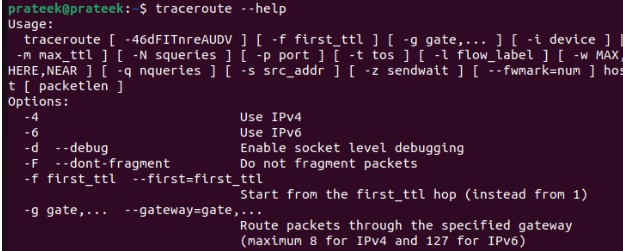Operating systems make use of packets for transferring the information on a network. These are little pieces of information that bring data and take a trip among gadgets. Additionally, when any type of network problem develops, packets help in recognizing the origin of the underlying trouble. How? By tracing the course of those packets.
The traceroute command in Linux aids you map the course packets take while taking a trip to a particular destination. This additional helps you repair network latency, package loss, network hops, DNS resolution issues, sluggish internet site gain access to, and much more. So, in this blog site, we will certainly clarify basic ways to make use of the traceroute command in Linux.
Just How To Make Use Of Traceroute Command in Linux
First of all, the traceroute does not come preinstalled in many Linux circulations. Nonetheless, you can install it by implementing among the listed below command according to your system:
| Operating System | Command |
| Debian/Ubuntu | sudo suitable set up traceroute |
| Fedora | sudo dnf install traceroute |
| Arc Linux | sudo pacman -Sy traceroute |
| openSUSE | sudo zypper install traceroute |
After installment, you can apply the traceroute command by entering:
traceroute destination_IP >
Replace

The result shows just one hop while noting others as an asterisk(*). This occurs because the subsequent hops did not react within the timeout duration of 3 seconds. Furthermore, the traceroute command, by default, utilizes DNS resolution to get the hostnames of jumps, which reduces the process. You can omit that part and overview it to display only the IP addresses by using the -n option:
traceroute -n destination_IP >


If you intend to limit the number of jumps, make use of the -m alternative in addition to the traceroute command:
traceroute -m N destination_IP >


Right here, put the wanted variety of hops in place of N. On execution, it will return just N variety of hops in the results. The traceroute command only shows every jump’s round-trip time(RTT). Nevertheless, you can get even more detailed timing info with the -I option:
traceroute -I destination_IP >


This command sends out an ICMP resemble request to obtain more precise RTT data. For example, take back the example of Google:
Suggestion : If your specified location limits ICMP packages, you can instead map the UDP packets by using the -U option:
traceroute -U destination_IP >


In case you wish to discover even more alternatives for traceroute, after that please run the below command:


A Quick Wrap-up
Traceroute is an outstanding CLI energy that you can make use of to identify network-related problems in Linux. It traces the course of packages to identify all the important issues of the network. Thus, We have actually discussed every detail regarding the traceroute command with the aid of some examples.

